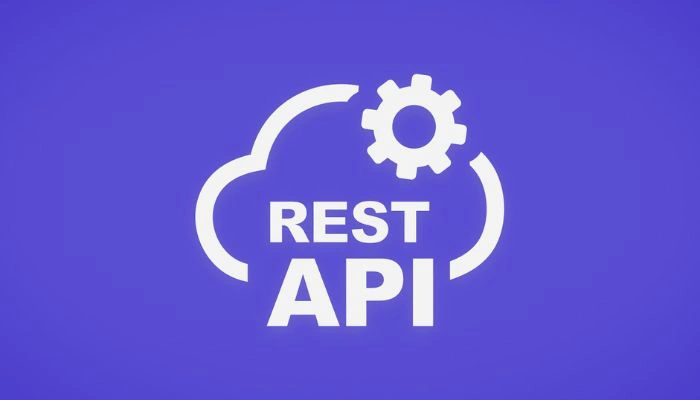Securityascode Simplifying DevOps Security
As technology continues to evolve, so do the threats to security. The rise of DevOps practices has brought about a new approach to addressing security concerns - Security-as-Code. This innovative approach involves embedding security throughout the software development lifecycle, from planning to deployment, ensuring that security controls are consistently applied and automated.

Security-as-Code is a smart solution to the complex endeavor of securing software development. By mapping out how changes to code and infrastructure are made, Security-as-Code adds security checks, tests, and gates without introducing unnecessary costs or delays. This approach ensures that security is not an afterthought, but rather a fundamental part of the development process.
Implementing Security-as-Code requires a shift in mindset and culture. Developers, operations teams, and security professionals must work together to ensure that security is a shared responsibility. However, the benefits of Security-as-Code are significant, including improved security posture, reduced risk, and faster time-to-market. By embracing Security-as-Code, organizations can stay ahead of the curve in an ever-evolving security landscape.
Key Takeaways
- Security-as-Code is an innovative approach to addressing security concerns in software development.
- It involves embedding security throughout the software development lifecycle, ensuring that security controls are consistently applied and automated.
- Implementing Security-as-Code requires a shift in mindset and culture, but the benefits are significant, including improved security posture, reduced risk, and faster time-to-market.
Understanding Security-as-Code

As a security practitioner, I understand the importance of embedding security throughout the software development lifecycle (SDLC) and automating security controls. Security-as-code is a smart solution to achieve this goal. In this section, I will explain what security-as-code is and why it is essential for organizations to adopt it.
The DevOps and DevSecOps Connection
DevOps is a software development approach that emphasizes collaboration and communication between developers and operations teams. DevSecOps is an extension of DevOps that integrates security into the DevOps process. Security-as-code gives pragmatic meaning to the concept of DevSecOps. By embedding security throughout the SDLC, security controls can be automated and consistently applied, leading to better collaboration, efficiency, and productivity.
Infrastructure as Code and Security Policies
Infrastructure as code (IaC) is a practice of managing and provisioning infrastructure through code. Security policies are predefined security rules that must be followed to ensure compliance with industry standards and regulations. Security-as-code combines IaC and security policies to automate the deployment of secure infrastructure. By defining security policies as code, security controls can be enforced before the infrastructure is deployed, reducing the risk of security breaches.
Importance of Automated Approach
Automation is the key to efficient and effective security-as-code implementation. Custom scripts can be used to automate security scans, but this approach is not scalable. An automated approach is essential to ensure that security checks are consistently applied throughout the SDLC. Automated security testing tools can be integrated into the CI/CD pipeline to scan code for vulnerabilities and ensure that security policies are enforced.
In conclusion, security-as-code is a smart solution to embed security throughout the SDLC. It enables organizations to focus on shifting left and automating security processes, leading to better collaboration, efficiency, and productivity. By adopting security-as-code, organizations can ensure compliance, reduce the risk of security breaches, and increase the velocity of DevOps.
Implementing Security-as-Code

As a developer, implementing security-as-code is crucial to ensure that our code is secure and compliant with regulations. Here are some best practices that I follow when integrating security-as-code into my projects.
Integrating with GitLab
GitLab is a popular DevOps platform that has built-in security features to help developers implement security-as-code. By using GitLab DevSecOps, I can integrate security into my code commit and launch processes. With GitLab, I can also automate security scans, vulnerability testing, and code analysis to ensure that my code is secure.
Adopting Best Practices
To ensure that my code is secure, I follow best practices for secure code development. This includes using static and dynamic analysis tools, penetration testing, and fuzz testing. I also conduct manual tests to ensure that my code is secure. By adopting these best practices, I can identify and fix vulnerabilities before they become a problem.
Managing Sensitive Data and Secrets
Managing sensitive data and secrets is an important part of security-as-code. I use GitLab to manage my secrets and sensitive data by using its built-in security dashboard. This allows me to securely store and manage my secrets, and to monitor access to them. I also use a staging environment to test my code before launching it into production to prevent misconfigurations and mishaps.
By following these best practices, I can ensure that my code is secure and compliant with regulations. Implementing security-as-code also helps me to focus on productivity and efficiency, as I can automate security processes and collaborate with my team to ensure that our code is secure. By using GitLab DevSecOps, I can ensure that my code is secure from the start, and that I can receive continuous feedback to improve my application security.
Conclusion

In conclusion, Security-as-code is a smart solution to a complex endeavor in DevOps. It provides an automated approach to security policies that boosts efficiency and prevents misconfigurations that result in exploitable security flaws. By embedding security throughout the software development lifecycle (SDLC), security controls can be automated and consistently applied, making it easier for developers to create secure code.
GitLab's DevSecOps methodology assessment provides a comprehensive approach to implementing security as code, integrating security policies, tests, and scans into the pipeline and code itself. This approach ensures that security is brought to the speed of DevOps, creating a continuous feedback loop that allows for the early resolution of security flaws before vulnerabilities can be introduced for exploit.
To ensure that security is a top priority in an organization, it is crucial to have predefined security policies and controls in place. Security practitioners can automate security scans and use a security dashboard to monitor the security of applications and sensitive data. Fuzz testing, static analysis, dynamic analysis, and penetration testing are some of the best practices that can be built into the pipeline to ensure that the code is secure.
Collaboration between development and security teams is essential to ensure that security is not an afterthought in the software development process. Shifting left and automating security scans during the code commit stage can help catch security mishaps early in the SDLC. Custom scripts can also be used to automate security processes and ensure compliance with regulations.
In today's fast-paced environment, it is crucial to focus on productivity and efficiency while maintaining security. Security-as-code provides a smart solution to this challenge, allowing organizations to launch secure applications in the cloud or on-premise with confidence. By following best practices and integrating security into the SDLC, organizations can create a secure software development process that meets compliance requirements and protects user privacy.
Frequently Asked Questions

How can DevOps teams improve code security?
DevOps teams can improve code security by implementing security-as-code practices. This involves integrating security into every stage of the software development lifecycle (SDLC) and automating security checks and tests. By doing so, developers can catch vulnerabilities early on in the process and ensure that their code is secure before it is deployed.
What is the role of security in DevOps?
Security plays a crucial role in DevOps by ensuring that software is secure throughout the SDLC. In traditional development models, security is often an afterthought, added at the end of the development process. However, in DevOps, security is integrated into every stage of the SDLC, from planning to deployment.
What are the benefits of implementing security-as-code?
Implementing security-as-code provides several benefits, including faster time-to-market, improved code quality, and increased security. By integrating security into the development process, developers can catch vulnerabilities early on, reducing the risk of security breaches and ensuring that code is secure before it is deployed.
How does GitLab's secure pipeline contribute to code security?
GitLab's secure pipeline contributes to code security by providing an automated process for security testing and checks. This pipeline includes automated security scans, vulnerability checks, and code quality checks, ensuring that code is secure and meets quality standards before it is deployed.
What is DevSecOps and how does it relate to security-as-code?
DevSecOps is a software development philosophy that emphasizes the importance of security in the SDLC. It involves integrating security into every stage of the development process, from planning to deployment. Security-as-code is a key component of DevSecOps, as it involves automating security checks and tests to ensure that code is secure throughout the SDLC.
How does GitLab's security and governance features enhance DevSecOps practices?
GitLab's security and governance features enhance DevSecOps practices by providing a comprehensive set of tools for managing security and compliance. These features include automated security scans, vulnerability management, and compliance reporting, ensuring that code is secure and meets regulatory requirements. By using these features, DevOps teams can improve code quality, reduce risk, and ensure that their software is secure and compliant.









